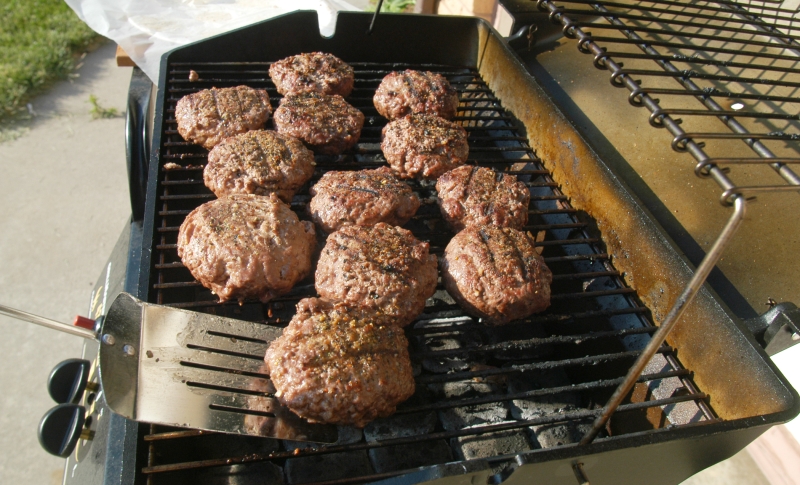
By Bethany Johnston, UNL Extension Educator
Brush the dust off the grill and fire it up for summer! Enjoy the rich taste of grilled beef! Here are some tips to keep you (and your pocketbook) healthy!
Beef is nutrient rich- a lot of nutrients with not many calories. (Regular soda pop is the opposite of nutrient rich- it has a lot of calories and little nutritional value). Beef is a rich source of ZIP- zinc, iron, and protein.
Not to mention over 29 beef cuts are considered “lean cuts” by USDA with less than 10 grams of total fat. Look for the words “loin”, “round”, or “sirloin.” For a hamburger with less fat, choose at least a 91% lean ground beef.
Ever heard of the benefits of eating olive oil? Over half of the fat found in beef is the same as olive oil, the monounsaturated fat called oleic acid.
Beware of lean cuts with high collagen on the grill! If you grill a round or flank steak without tenderizing or marinating, the steak will be tough and chewy. Look for a marinade with an acid (lemon juice, soy sauce, worcestershire sauce, etc.). To tenderize, place the meat in a bag with the marinade, put the bag in a tray just in case it leaks, and place in the refrigerator for 12-24 hours. Don’t marinade over 24 hours or the steak will be mealy and crumbly.
Some prefer well-marbled beef cuts for their added flavor. Choice and Prime have more marbling (or flecks of fat) in the steak than Select cuts. To marinade for flavor, follow the same steps above, but refrigerate for 15 minutes to 2 hours. Ground chuck is noted for its bold, beefy flavor in hamburgers, if you don’t mind a few more grams of fat.
To save money at the meat counter, load up on primal cuts during big sales. A whole strip loin can be cut into individual steaks at home and sealed individually or in pairs in freezer bags. Hungry for a steak- just get the bag out of the freezer and defrost in your refrigerator the day before. Large containers of hamburger can be divided and frozen in smaller packages or patties, too. Choose tender, flavorful cuts like the flat iron steak (2nd most tender cut, right behind the filet mignon) that are easier on the pocketbook.
No matter which beef cut you buy, remember to always follow food safety tips to prevent foodborne illness. Keep raw meat refrigerated. Thawing meat in the refrigerator is the most ideal, followed by a cold water bath. You should not thaw meat on the kitchen counter, or in a hot water bath. Raw meat and cooked meat should never cohabitate: use separate cutting boards for raw and cooked meat, separate plates to carry the meat, and separate knives to cut the raw and cooked meat. In addition, you should wash your hands with soap and hot water, before and after handling raw meat products. Throw away the marinade, or bring it to a boil before eating. Don’t leave cooked food sitting out at room temperature for more than two hours. Use an instant-read thermometer to prevent over- or undercooking. Remember to be safe, the inside of a hamburger should reach 160 ◦F.
Grilling weather is here, so dust off the grill and enjoy a flavorful steak or juicy hamburger. For more recipes or food safety tips go to http://food.unl.edu/ or http://www.beefitswhatsfordinner.com/.